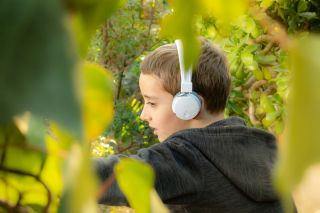Autism
Sensory Downtime: Autism and Auditory Processing
Environmental adjustments for sensory downtime can be a support.
Posted April 22, 2023 Reviewed by Lybi Ma
Key points
- Autistic children demonstrate many strengths and challenges associated with auditory processing.
- Autistic children can demonstrate differences in orienting to sounds, processing speech, comprehending prosody, or filtering background sounds.
- Auditory processing can be accompanied by an experience of fatigue, which can further exacerbate processing difficulties.
“I think there is something wrong with his [her] hearing,” is a comment I often hear from parents of children on the spectrum, pertaining to the atypical auditory processing they notice in their loved ones. I, too, recall receiving numerous requests to check my son’s hearing when he was a toddler from relatives concerned about his limited response to his name. Research confirms that autistic children are, indeed, less likely to “orient to sounds,” especially speech (Werner et al., 2000).
Autistic children demonstrate many strengths associated with auditory processing. My 9-year-old’s hilarious improvisations are a delightful source of family fun, and so is his enjoyment of humming simple melodies that he likes to make up with his younger brother (in perfect pitch). Research confirms that autistic children’s processing of auditory input is associated with many strengths, the key one being superior pitch memory for pure tones (Mottron et al, 1999).
Despite autistic children’s advantage around identifying and recalling pure tones, this strength does not generalize to speech sounds. In fact, Jones et al. (2009) found that for autistic adolescents, pitch discrimination was correlated with a higher likelihood of language delay. O’Connor (2012) suggested that the relationship between superior pitch discernment in non-speech sounds and increased likelihood of speech delay (in some individuals) may be due to “reduced attention to linguistic information” during development, or hypersensitivity to sound that impacts the processing of linguistic information. According to Neural Complexity Hypothesis (Samson et al., 2006), as the complexity of the sound and cognitive demands increase, so do processing challenges and their corresponding neurological indicators such as a decrease in blood flow in the auditory associative cortex or reduced activity in the region of the brain associated with word processing (posterior part of the left middle temporal gyrus) (Samson et al., 2006).
Many autistic individuals additionally find it challenging to process sound against a background noise due to finding it difficult to filter out background sounds, possibly due to “reduced frequency selectivity at the level of the cochlea” (O’Connor, 2012).
Another component of auditory processing is the discrimination of prosodic features of speech such as variations in pitch or lengths of sounds, or intonations, to name a few. Prosodic features impact communication and comprehension, for example by helping to distinguish between questions and commands, communicating sarcasm, or playing a key part in expressing emotions. Research around the comprehension of prosodic features remains inconclusive due to limited studies with varied tasks and designs, however, it suggests that autistic children are less likely to perceive prosodic features that communicate affect or differentiate statements from questions (Järvinen-Pasley, 2008). Some individuals on the autism spectrum exhibit reduced use of prosodic features and display “flat affect,” characterised by a reduced variation in tone or a flattened emotional response. Flat affect may be associated with challenges in social communication and peer acceptance (O’Connor, 2012).
Another key auditory processing challenge for many children on the spectrum is a heightened sensitivity to loud sounds (Khalfa, 2004), which is experiencing lower thresholds of discomfort in response to loud sounds in comparison to neurotypical peers. This can manifest in many ways such as discomfort in noise-filled spaces such as shopping centers, a dislike for unexpected sound intrusions such as the flushing of toilets, or in my case, my 5-year-old requesting that I stop talking and only listen (a lot).
It is important to appreciate that the above-mentioned differences in auditory processing may be associated with an experience of fatigue (Sturrock et al., 2022) that can exacerbate processing difficulties, as well as have individual implications for learning, information processing, and working memory.
Sturrock et al.’s (2022) participants shared numerous strategies for coping with atypical auditory processing in various contexts, including learning mindful strategies for focusing their attention, making use of visual supplements such as lip reading, purposefully choosing environments with limited background noise, making use of earplugs, retreating to a quiet place, choosing technological solutions to suit individual needs such as learning online where the background noise is controlled for, “limiting time in a challenging listening environment,” or “building in sensory ‘downtime.’”
Despite research identifying these general trends, it is important to remember that autism is a heterogeneous condition with much variability between individuals in how they process sensory input, including auditory.
In their qualitative study, Sturrock et al. (2022) found that autistic individuals felt concerned about society’s general lack of awareness and appreciation of individual variations in auditory processing and how these impact interpersonal communication. I can appreciate this in my parenting journey whenever I find myself encouraging environmental adjustments such as sensory breaks, to manage the fatigue that comes from coping with a day filled with filtering our background sounds, interpreting prosodic features, as well as coping with neurotypical social and learning expectations.

References
Järvinen-Pasley, A., Peppé, S., King-Smith, G., & Heaton, P. (2008). The Relationship between Form and Function Level Receptive Prosodic Abilities in Autism. Journal of Autism and Developmental Disorders, 38(7), 1328–1340.
Jones, C. R. G., Happé, F., Baird, G., Simonoff, E., Marsden, A. J. S., Tregay, J., Phillips, R. J., Goswami, U., Thomson, J. M., & Charman, T. (2009). Auditory discrimination and auditory sensory behaviours in autism spectrum disorders. Neuropsychologia, 47(13), 2850–2858.
Khalfa, S., Bruneau, N., Rogé, B., Georgieff, N., Veuillet, E., Adrien, J.-L., Barthélémy, C., & Collet, L. (2004). Increased perception of loudness in autism. Hearing Research, 198(1), 87–92.
Mottron, L., Peretz, I., Belleville, S., & Rouleau, N. (1999). Absolute pitch in autism: A case study. Neurocase, 5(6), 485–501.
O’Connor, K. (2012). Auditory processing in autism spectrum disorder: A review. Neuroscience and Biobehavioral Reviews, 36(2), 836–854.
Samson, F., Mottron, L., Jemel, B., Belin, P., & Ciocca, V. (2006). Can Spectro-Temporal Complexity Explain the Autistic Pattern of Performance on Auditory Tasks? Journal of Autism and Developmental Disorders., 36(1), 65–76.
Sturrock, A., Guest, H., Hanks, G., Bendo, G., Plack, C. J., & Gowen, E. (2022). Chasing the conversation: Autistic experiences of speech perception. Autism & Developmental Language Impairments, 7, 239694152210775–23969415221077532.
Werner, E., Dawson, G., Osterling, J., & Dinno, N. (2000). Brief report: Recognition of autism spectrum disorder before one year of age: a retrospective study based on home videotapes. Journal of Autism and Developmental Disorders, 30(2), 157–162.


